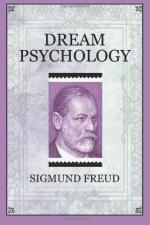By reason of the undoubted connection existing between all the parts of dream thoughts, the dream is able to embody this matter into a single scene. It upholds a logical connection as approximation in time and space, just as the painter, who groups all the poets for his picture of Parnassus who, though they have never been all together on a mountain peak, yet form ideally a community. The dream continues this method of presentation in individual dreams, and often when it displays two elements close together in the dream content it warrants some special inner connection between what they represent in the dream thoughts. It should be, moreover, observed that all the dreams of one night prove on analysis to originate from the same sphere of thought.
The causal connection between two ideas is either left without presentation, or replaced by two different long portions of dreams one after the other. This presentation is frequently a reversed one, the beginning of the dream being the deduction, and its end the hypothesis. The direct transformation of one thing into another in the dream seems to serve the relationship of cause and effect.
The dream never utters the alternative “either-or," but accepts both as having equal rights in the same connection. When “either-or” is used in the reproduction of dreams, it is, as I have already mentioned, to be replaced by “and.”
Conceptions which stand in opposition to one another are preferably expressed in dreams by the same element.[2] There seems no “not” in dreams. Opposition between two ideas, the relation of conversion, is represented in dreams in a very remarkable way. It is expressed by the reversal of another part of the dream content just as if by way of appendix. We shall later on deal with another form of expressing disagreement. The common dream sensation of movement checked serves the purpose of representing disagreement of impulses—a conflict of the will.
Only one of the logical relationships—that of similarity, identity, agreement—is found highly developed in the mechanism of dream formation. Dream work makes use of these cases as a starting-point for condensation, drawing together everything which shows such agreement to a fresh unity.
These short, crude observations naturally do not suffice as an estimate of the abundance of the dream’s formal means of presenting the logical relationships of the dream thoughts. In this respect, individual dreams are worked up more nicely or more carelessly, our text will have been followed more or less closely, auxiliaries of the dream work will have been taken more or less into consideration. In the latter case they appear obscure, intricate, incoherent. When the dream appears openly absurd, when it contains an obvious paradox in its content, it is so of purpose. Through its apparent disregard of all logical claims, it expresses a part of the intellectual content of the dream ideas. Absurdity in the dream denotes disagreement, scorn, disdain in the dream thoughts. As this explanation is in entire disagreement with the view that the dream owes its origin to dissociated, uncritical cerebral activity, I will emphasize my view by an example:




